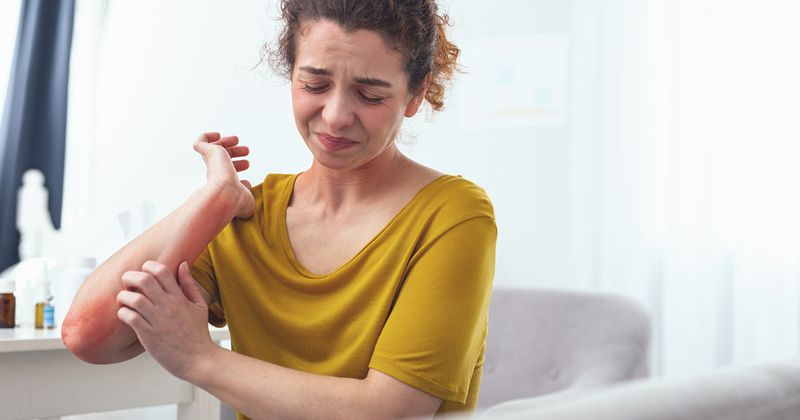Dupilumab efficacious in bullous pemphigoid treatment
Key takeaways:
- Of 146 patients treated with dupilumab, 127 achieved disease control within 4 weeks.
- Complete remission was observed in 52 patients in the multicenter retrospective study.
Patients with bullous pemphigoid experienced symptom improvement with dupilumab treatment, according to a study.
“Bullous pemphigoid (BP) is one of the most common autoimmune bullous diseases, characterized by swelling erythema, tense blisters and severe itching,” Liuqi Zhao, MD, of the department of dermatology at Peking University First Hospital in Beijing, and colleagues wrote. “In the past, topical and systemic corticosteroids, immunosuppressive agents and immunomodulating drugs (eg, tetracycline and dapsone) were often used to treat BP. However, most patients with BP are older adults with multiple clinical comorbidities, making them unable to tolerate long-term high-dose immunosuppressive therapy.”

A multicenter, retrospective cohort study of 146 patients with BP who received 300 mg of dupilumab every 2 weeks following an initial 600 mg dose was conducted at six dermatology departments in China.
Disease control was achieved by 127 (87%) patients within 4 weeks, and 109 (74.7%) of these patients achieved this goal within 2 weeks of treatment initiation. Concurrent oral steroids were given to 77 (60.6%) of these patients, and of the 51 patients who received dupilumab monotherapy or a combination of topical steroids and/or minocycline, 46 (90.2%) achieved disease control within 4 weeks and 39 (76.5%) achieved disease control within 2 weeks.
The researchers further observed sustained improvement in Bullous Pemphigoid Disease Area Index scores, itching numerical rating scale scores, serum anti-BP180 and anti-BP230 antibodies, total IgE levels and eosinophil count after treatment with dupilumab.
Complete remission was achieved by 52 (35.6%) of patients during the observation period.
Oral steroids were also used by 21 (40.4%) of these patients.
Relapse occurred in 13 (8.9%) subjects, of which eight (61.5%) relapsed during treatment and five (38.5%) relapsed after discontinuation. Men were more likely to experience relapse (HR = 10.97; 95% CI, 1.42-84.92), according to the authors.
“Considering that BP follows a chronic course, tapering and discontinuation of dupilumab also came into consideration. Patients who maintained the initial treatment regimen after 16 weeks of medication had the lowest relapse rate, while those who discontinued the drug before or at 16 weeks had the highest relapse rate,” the authors wrote.
Adverse events were mostly mild with skin and soft tissue infections being the most common (9.6%).
Six patients who did not receive systemic steroids developed pneumonia; however, each were of advanced age with other comorbidities.
“Considering that patients with BP are mostly older adults with multiple comorbidities, physicians should carefully monitor the clinical changes of patients after the application of dupilumab,” according to the authors.
